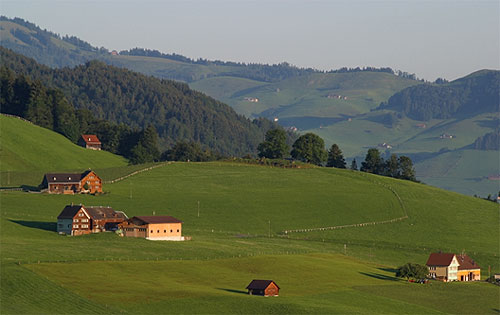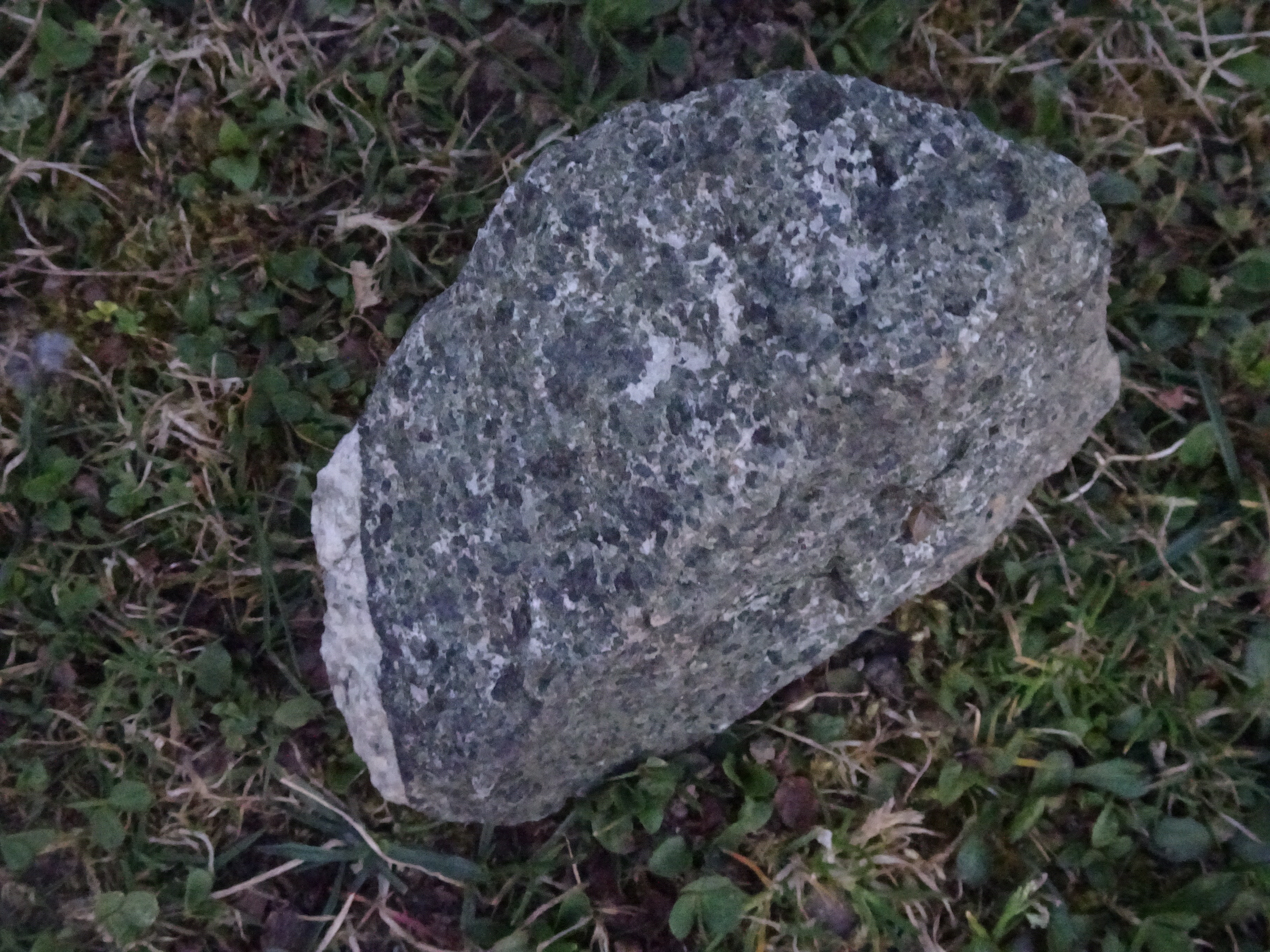|
Lehen Na Pohorju
Lehen na Pohorju () is a dispersed settlement in the Pohorje Hills in the Municipality of Podvelka in Slovenia. Mass grave Lehen na Pohorju is the site of a mass grave A mass grave is a grave containing multiple human corpses, which may or may not be identified prior to burial. The United Nations has defined a criminal mass grave as a burial site containing three or more victims of execution, although an exact ... from the Second World War. The Lehen Mass Grave ( sl, Grobišče Lehen) is located above the Urbanc farm, at Lehen na Pohorju no. 17. It contains the remains of eight Slovene civilians. They had sought to join a local Partisan unit, but were accused of being spies. The Partisans tortured and then murdered the victims on 4 January 1944, and burned their bodies. The local people collected the remains and buried them in the forest above the house. References External linksLehen na Pohorju on Geopedia Populated places in the Municipality of Podvelka {{Podvel ... [...More Info...] [...Related Items...] OR: [Wikipedia] [Google] [Baidu] |
Flag Of Slovenia
The national flag of Slovenia ( sl, zastava Slovenije) features three equal horizontal bands of white (top), blue, and red, with the Coat of arms of Slovenia located in the upper hoist side of the flag centered in the white and blue bands. The coat of arms is a shield with the image of Mount Triglav, Slovenia's highest peak, in white against a blue background at the center; beneath it are two wavy blue lines representing the Adriatic Sea and local rivers, and above it are three six-pointed golden stars arranged in an inverted triangle which are taken from the coat of arms of the Counts of Celje, the great Slovene dynastic house of the late 14th and early 15th centuries. The flag's colors are considered to be Pan-Slavism, Pan-Slavic, but they actually come from the Middle Ages, medieval coat of arms of the Duchy of Carniola, consisting of 3 stars, a mountain, and three colors (red, blue, yellow). crescent. The existing Slovene tricolor was raised for the first time in history duri ... [...More Info...] [...Related Items...] OR: [Wikipedia] [Google] [Baidu] |
Slovenia
Slovenia ( ; sl, Slovenija ), officially the Republic of Slovenia (Slovene: , abbr.: ''RS''), is a country in Central Europe. It is bordered by Italy to the west, Austria to the north, Hungary to the northeast, Croatia to the southeast, and the Adriatic Sea to the southwest. Slovenia is mostly mountainous and forested, covers , and has a population of 2.1 million (2,108,708 people). Slovenes constitute over 80% of the country's population. Slovene, a South Slavic language, is the official language. Slovenia has a predominantly temperate continental climate, with the exception of the Slovene Littoral and the Julian Alps. A sub-mediterranean climate reaches to the northern extensions of the Dinaric Alps that traverse the country in a northwest–southeast direction. The Julian Alps in the northwest have an alpine climate. Toward the northeastern Pannonian Basin, a continental climate is more pronounced. Ljubljana, the capital and largest city of Slovenia, is geogr ... [...More Info...] [...Related Items...] OR: [Wikipedia] [Google] [Baidu] |
Lower Styria
Styria ( sl, Štajerska), also Slovenian Styria (''Slovenska Štajerska'') or Lower Styria (''Spodnja Štajerska''; german: Untersteiermark), is a traditional region in northeastern Slovenia, comprising the southern third of the former Duchy of Styria. The population of Styria in its historical boundaries amounts to around 705,000 inhabitants, or 34.5% of the population of Slovenia. The largest city is Maribor. Use of the term In the 19th century the Styrian duchy, which existed as a distinct political-administrative entity from 1180 to 1918, used to be divided into three traditional regions: Upper Styria (''Obersteiermark''; ''Zgornja Štajerska''), Central Styria (''Mittelsteiermark''; ''Srednja Štajerska''), and Lower Styria, stretching from the Mur River and the Slovene Hills in the north down to the Sava. Upper Styria and Central Styria, predominantly German-speaking, today form the Austrian state of Styria (''Steiermark''). The southern third, predominantly Slovene-spe ... [...More Info...] [...Related Items...] OR: [Wikipedia] [Google] [Baidu] |
Statistical Regions Of Slovenia
The statistical regions of Slovenia are 12 administrative entities created in 2000 for legal and statistical purposes. Division By a decree in 2000, Slovenia has been divided into 12 statistical regions ( NUTS-3 level), which are grouped in two cohesion regions (NUTS-2 level). which replace the historical regions of the country. The statistical regions have been grouped into two cohesion regions are: *Eastern Slovenia (''Vzhodna Slovenija'' – SI01), which groups the Mura, Drava, Carinthia, Savinja, Central Sava, Lower Sava, Southeast Slovenia, and Littoral–Inner Carniola regions. * Western Slovenia (''Zahodna Slovenija'' – SI02), which groups the Central Slovenia, Upper Carniola, Gorizia, and Coastal–Karst regions. Sources Slovenian regions in figures 2014 See also *List of Slovenian regions by Human Development Index *Municipalities of Slovenia Slovenia is divided into 212 municipalities ( Slovene: ''občine'', singular'' občina''), of which 12 have urban (metr ... [...More Info...] [...Related Items...] OR: [Wikipedia] [Google] [Baidu] |
Carinthia Statistical Region
The Carinthia Statistical Region ( sl, Koroška statistična regija) is a statistical region in northern Slovenia along the border with Austria. The region is difficult to access and is poorly connected with the central part of Slovenia. The environment has been strongly affected by heavy industry in the valleys. The importance of agriculture is shown by the fact that the farms in the region are among the largest in the country. More than 90% of farms in the region are engaged in breeding livestock. Farm owners in the region have the youngest average age in Slovenia (53 years); they average eight years younger than farm owners in the Coastal–Karst Statistical Region. In 2013 the registered unemployment rate was higher than the national average. The difference between the registered unemployment rate for men and women was the highest among the statistical regions: for women it was 7 percentage points higher than for men. The share of five-year survivals among new enterprises was ... [...More Info...] [...Related Items...] OR: [Wikipedia] [Google] [Baidu] |
Municipalities Of Slovenia
Slovenia is divided into 212 municipalities ( Slovene: ''občine'', singular'' občina''), of which 12 have urban (metropolitan) status. Municipalities are further divided into local communities and districts. Slovene is an official language of all the municipalities. Hungarian is a second official language of three municipalities in Prekmurje: Dobrovnik/Dobronak, Hodoš/Hodos, and Lendava/Lendva. Italian is a second official language of four municipalities (of which one has urban status) in the Slovene Littoral The Slovene Littoral ( sl, Primorska, ; it, Litorale; german: Küstenland) is one of the five traditional regions of Slovenia. Its name recalls the former Austrian Littoral (''Avstrijsko Primorje''), the Habsburg possessions on the upper Adria ...: Ankaran/Ancarano, Izola/Isola, Koper/Capodistria, and Piran/Pirano. In the EU statistics, the municipalities of Slovenia are classified as "local administrative unit 2" (LAU 2), below 58 administrative units ('), which ... [...More Info...] [...Related Items...] OR: [Wikipedia] [Google] [Baidu] |
Municipality Of Podvelka
The Municipality of Podvelka (; sl, Občina Podvelka) is a municipality in the traditional region of Styria in northern Slovenia. The seat of the municipality is the town of Podvelka. The Municipality of Podvelka–Ribnica was created in 1994, and it then split into the Municipality of Ribnica na Pohorju and the Municipality of Podvelka in 1998. Settlements In addition to the municipal seat of Podvelka, the municipality also includes the following settlements: * Brezno * Janževski Vrh * Javnik * Kozji Vrh * Lehen na Pohorju * Ožbalt * Rdeči Breg * Spodnja Kapla * Vurmat * Zgornja Kapla Zgornja Kapla () is a dispersed settlement in the hills north of the Drava River in the Municipality of Podvelka in Slovenia, on the border with Austria. Name The name ''Zgornja Kapla'' literally means 'upper Kapla', distinguishing the settlement ... References External links *Municipality of Podvelka on Geopedia [...More Info...] [...Related Items...] OR: [Wikipedia] [Google] [Baidu] |
Dispersed Settlement
A dispersed settlement, also known as a scattered settlement, is one of the main types of settlement patterns used by landscape historians to classify rural settlements found in England and other parts of the world. Typically, there are a number of separate farmsteads scattered throughout the area. A dispersed settlement contrasts with a nucleated village. It can be known as main human settlements. The French term ''bocage'' is sometimes used to describe the type of landscape found where dispersed settlements are common. In addition to Western Europe, dispersed patterns of settlement are found in parts of Papua New Guinea, as among the Gainj, Ankave, and Baining tribes. It is also frequently met with in nomadic pastoral societies. In Ghana, Kumbyili in the northern region is also an example of a dispersed settlement England In England, dispersed settlements are often found in the areas of ancient enclosure outside the central region—for example, Essex, Kent and the West Cou ... [...More Info...] [...Related Items...] OR: [Wikipedia] [Google] [Baidu] |
Pohorje
Pohorje (), also known as the Pohorje Massif or the Pohorje Mountains (german: Bachergebirge, ''Bacherngebirge'' or often simply ''Bachern''), is a mostly wooded, medium-high mountain range south of the Drava River in northeastern Slovenia. According to the traditional AVE classification it belongs to the Southern Limestone Alps. Geologically, it forms part of the Central Alps and features silicate metamorphic and igneous rock. Pohorje is sparsely populated with dispersed villages. There are also some ski resorts. Geography Pohorje is an Alpine mountain ridge with domed summits south of the Drava. It roughly lies in the triangle formed by the towns of Maribor (to the east), Dravograd (to the west) and Slovenske Konjice (to the south). To the northwest, it is bounded by the Mislinja River, to the south by the Vitanje Lowlands (), to the east it descends to the Drava Plain () and to the southeast it descends to the Pohorje Foothills (). It measures about from east to west an ... [...More Info...] [...Related Items...] OR: [Wikipedia] [Google] [Baidu] |
Mass Graves In Slovenia
Mass graves in Slovenia were created in Slovenia as the result of extrajudicial killings during and after the Second World War. These clandestine mass graves are also known as "concealed mass graves" ( sl, prikrita grobišča) or "silenced mass graves" () because their existence was concealed under the communist regime from 1945 to 1990.Ferenc, Mitja, & Ksenija Kovačec-Naglič. 2005. ''Prikrito in očem zakrito: prikrita grobišča 60 let po koncu druge svetovne vojne''. Ljubljana: Muzej novejše zgodovine. Some of the sites, such as the mass graves in Maribor, include some of the largest mass graves in Europe. Nearly 600 such sites have been registered by the Commission on Concealed Mass Graves in Slovenia, containing the remains of up to 100,000 victims. They have been compared by the Slovenian historian Jože Dežman to the Killing Fields in Cambodia. Background Many of the mass graves were created during the war, but the larger sites date from after the war. The wartime grav ... [...More Info...] [...Related Items...] OR: [Wikipedia] [Google] [Baidu] |
Yugoslav Partisans
The Yugoslav Partisans,Serbo-Croatian, Macedonian, Slovene: , or the National Liberation Army, sh-Latn-Cyrl, Narodnooslobodilačka vojska (NOV), Народноослободилачка војска (НОВ); mk, Народноослободителна војска (НОВ); sl, Narodnoosvobodilna vojska (NOV) officially the National Liberation Army and Partisan Detachments of Yugoslavia, sh-Latn-Cyrl, Narodnooslobodilačka vojska i partizanski odredi Jugoslavije (NOV i POJ), Народноослободилачка војска и партизански одреди Југославије (НОВ и ПОЈ); mk, Народноослободителна војска и партизански одреди на Југославија (НОВ и ПОЈ); sl, Narodnoosvobodilna vojska in partizanski odredi Jugoslavije (NOV in POJ) was the communist-led anti-fascist resistance to the Axis powers (chiefly Germany) in occupied Yugoslavia during World War II. Led by Josip Broz T ... [...More Info...] [...Related Items...] OR: [Wikipedia] [Google] [Baidu] |






